iPhone XR $749
Overall
-
Build Quality
(5)
-
Display
(4)
-
Features
(4.5)
-
Stability
(5)
-
Price
(4)
User Review
( votes)Summary
The iPhone XR is Apple’s answer to budget Androids and a step up from the iPhone SE (1 gen).
Pros
Best battery life of any iPhone ever Powerful Processor Stereo speakers provide full stereo sound Fast,pro-quality camera Strong, Colorful build
Cons
None
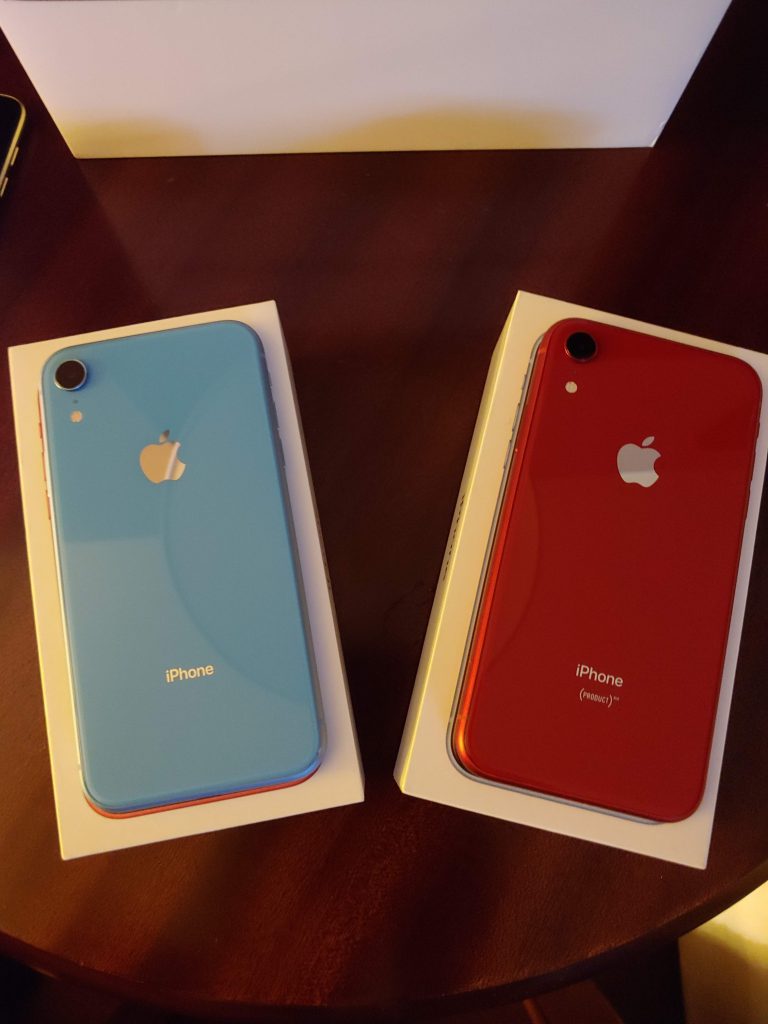
The iPhone XR (Released October 26th 2018) was released roughly a month after the iPhone XS and XS Max. Apple was smart to not release the XR at the same time as the XS duo, because the former would have surely dwarfed sales of the latter – as the XR may very well be not only the best iPhone Apple as ever made – but one of the best smartphones PERIOD. This all comes down to three things: price, design, and BATTERY LIFE.And for an avid, spec-hungry Android user, I can’t believe I’m saying it. But this revelation comes down to three things: ecosystem , build/design, and BATTERY LIFE.
Display Woes or Display Wows?

Smartphone critics and tech geeks will balk at the specs of the LED display, and it’s the first and foremost part of the device you will interact with – so let’s focus on it first. The 6.1″ Liquid Retina LCD display has a resolution of 1792 x 828, which looks terribly bad on paper. But the reality is the screen resolution offers 326ppi (pixels per inch), which is still 26 pixels above what the human eye can detect. And no, the XR doesn’t block video resolutions above 720p on YouTube. You can scale up to 1080p, which may be scaled up 720p or slightly scaled down 1080p, due to the 19:9 aspect ratio of the device (and no letterboxing) but the iPhone XR’s screen resolution doesn’t actually limit image quality at all.
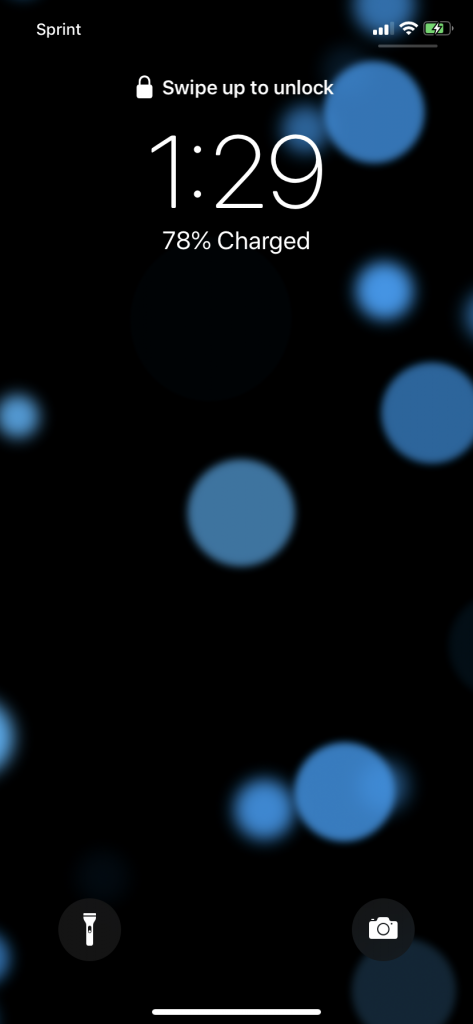

Build Quality
The iPhone XR upholds Apple’s reputation for premium devices, even if a few details amount to a perception of being slightly inferior to the iPhone XS/XS Max. The anodized aluminum railing, the IPS/LED display, and single lens 12MP rear camera of the XR isn’t the stainless steel build, the deep rich blacks of the OLED display, and dual-camera setup of the XS duo. But none is these things matter as the difference in materials and additional hardware are simply luxuries for those who want the best of the best. As is, the iPhone XR is every bit up to the standard set by the iPhone X in 2017, yet ups the ante with the most durable glass of any smartphone, and lively,vivid color choices that encompass all of the phone up to the display.

iPhone XR Specs

- 6.1-inch Liquid Retina display (LCD)
- IP67 water and dust resistant (max depth of 1 m up to 30 mins)
- 12MP camera with OIS and 7MP TrueDepth front camera
- Face ID for secure authentication and Apple Pay
- A12 Bionic with next-generation Neural Engine
- Wireless charging—works with Qi chargers
- 3GB RAM (2.75 usable)
If you are a Techie who swears by devices specs (RAM, camera MP count, and screen resolution), the iPhone XR may seem disappointing at first glance. But that would be do to the lack of understanding about how Android and iOS is built and the requirements for them to both run efficiently. Android needs as much RAM as possible due to the fact that it’s code (Javascript) is run through an “interpreter” from the Machine level to the UI and back. Then each OEM (Samsung, Motorola, LG) customizes their devices by adding features and themes on top of Android which requires more resources. Not to mention all the differentiation in devices,which makes Android more difficult to develop apps for. iOS on the other hand is Native code, which is optimized for all of the internal components. There may be many iPhones, but they all share the same internals -designed and optimized by one company – Apple. This amounts to processor and software development that is head and shoulders above the outsourced-collaborative models of making an Android device.

Benchmark
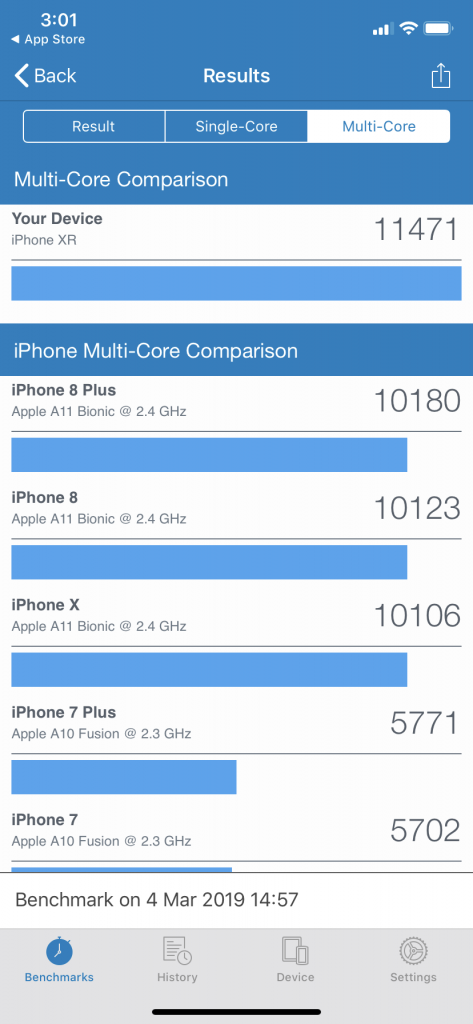
Benchmark
Software and Ecosystem
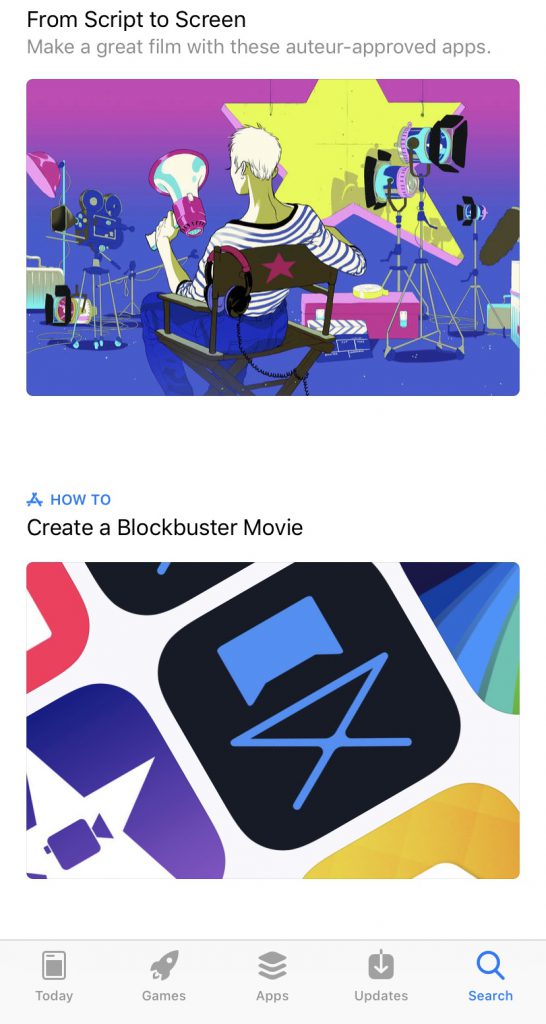
with tools that rival desktop counterparts.
The A12 Bionic processor beats out most laptop benchmark scores. That means the iOS devices are only limited by the apps and software developed for the platform. And many developers are porting their desktop software over to the iPhone/iPad. Adobe’s full Photoshop for PCs/Macs is due for release this year. From the desktop technician who desires a platform that requires less maintenance without sacrificing processing power, to the mobile road warrior looking to produce professional content on the go that translates to the final product without to much upscale – the iPhone reigns supreme.
Sure you can do light design, draft a word document from start to finish, add some entries to a spreadsheet, heck even edit a YouTube Video and score an original theme for it on an Android device. But the sheer breath and quality of options to offer for iOS through the App Store – and the variety of industries catered to is so complete and broad – it’s only rivaled by legacy desktop software. It’s that good.




And that’s before we get to the countless iOS first-if-not-outright-exclusive apps and games available. The App Store is clearly the leader and pioneer of content ecosystems. From media consumption to content creation, if the App Store was Travis Scott-it would say ,”I put this $h!+ together, I’m the glue!” (Someone said.)

Apple does a great job letting developer know what they are capable of creating by example as well:
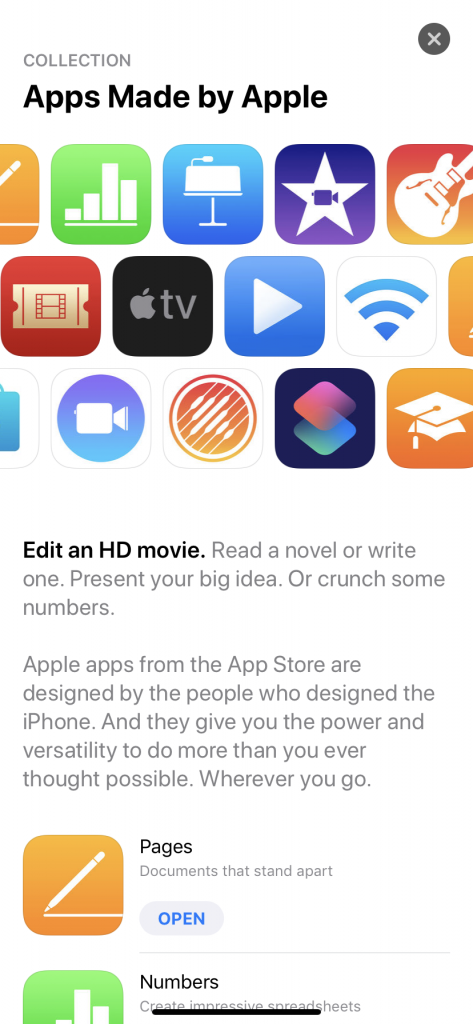
Another additional value (that’s not exclusive to the XR) is the fact that Apple’s iWork (Numbers,Keynote,and Pages) are included free for iOS devices in addition to creative apps like GarageBand and iMovie – which enable users to be productive right out the box without having to purchase any third party apps.
Price,Value and Conclusion
Hey, dare I say – having been a previous owner of the iPhone 5s 6,6s,SE, and a seven 7 with various Android devices between them;As well as before and after.Recollecting about all the smartphones I have owned, from the HTC G1, the Samsung Galaxy Nexus, Nexus 5, Note 3, LG G6 and G7,Galaxy S7,LG V30/V35/V40 and all of their strengths and weaknesses….the iPhone XR is the sweet spot in a device line-up that has the best combination of features that I believe general consumers and professional alike are looking for: price to value ratio, build quality, ecosystem, and length of support.
Should you Upgrade?
Is you have anything from the iPhone 8 and below, the XR would be your most sensible route of entry into the X family. It’s processor and battery+screen tech equals a significant upgrade over the X, but I’m not sure an upgrade from the X is necessary unless you qualify for a carrier upgrade.
In a world of $1,000 premium flagships and $500 “flagship killers” smartphones – the most rational choice for most in iOS world is the iPhone XR.


